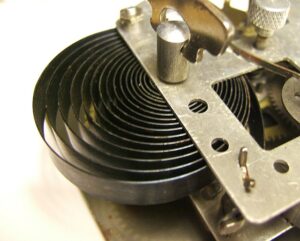 Luxury watches are more than mere timekeeping instruments; they are masterpieces of art, engineering, and human ingenuity. The art of watchmaking has evolved over centuries, transforming from a necessity-driven craft to a captivating blend of form and function. This fascinating journey takes us through the intricate craftsmanship behind luxury watches, delving into the world of complications, finishing techniques, and the fusion of art and horology.
Luxury watches are more than mere timekeeping instruments; they are masterpieces of art, engineering, and human ingenuity. The art of watchmaking has evolved over centuries, transforming from a necessity-driven craft to a captivating blend of form and function. This fascinating journey takes us through the intricate craftsmanship behind luxury watches, delving into the world of complications, finishing techniques, and the fusion of art and horology.
At the heart of every luxury watch lies its movement, the mechanism that powers the timepiece and brings it to life. Traditional mechanical movements are composed of hundreds of delicate components, painstakingly assembled by skilled watchmakers. These components, often no larger than a grain of rice, must work in perfect harmony to achieve unparalleled timekeeping accuracy. This level of precision and craftsmanship is a testament to the dedication and passion of the artisans who dedicate their lives to creating these horological marvels.
Complications are the additional functions and features of a watch beyond basic timekeeping. These complex mechanisms, such as perpetual calendars, chronographs, and minute repeaters, showcase the watchmaker’s mastery of mechanical engineering. For instance, the tourbillon, invented by Abraham-Louis Breguet in 1801, is a marvel of precision that counters the effects of gravity on a watch’s accuracy. The intricate assembly of a tourbillon, often visible through the watch’s dial or case back, is a mesmerizing dance of gears and wheels, captivating collectors and enthusiasts alike.
Finishing techniques add an extra layer of artistry to luxury watches. Watchmakers employ various methods to embellish movements, dials, and cases, including guilloché, engraving, and gem-setting. Guilloché, a decorative engraving technique, involves the intricate carving of geometric patterns onto watch components, creating visually stunning textures and reflections. Engraving, on the other hand, involves the meticulous hand-carving of intricate designs or personalized inscriptions onto the watch’s surface, adding a touch of exclusivity and elegance.
The fusion of art and horology is best exemplified in Métiers d’art timepieces. These limited-edition watches showcase exceptional craftsmanship and creativity, combining traditional watchmaking with various artistic techniques such as enameling, marquetry, and miniature painting. The result is a breathtaking, one-of-a-kind work of art that transcends the boundaries of traditional horology, elevating the luxury watch into a wearable masterpiece.
The art of watchmaking is a captivating journey through the craftsmanship, complications, and finishing techniques that define the world of luxury timepieces. As we continue to explore this mesmerizing domain, we are reminded of the human ingenuity and passion that have shaped horology, creating timeless treasures that delight and inspire generations.
Horology 101 -Want to learn more?
“The evolution of horology is marked by numerous innovations and milestones, each contributing to the advancement of timekeeping and the art of watchmaking. In this chapter, we will delve into some of the most significant breakthroughs in horological history, exploring the tourbillon, chronograph, self-winding movement, quartz revolution, and the rise of smartwatches and connected timepieces…”
